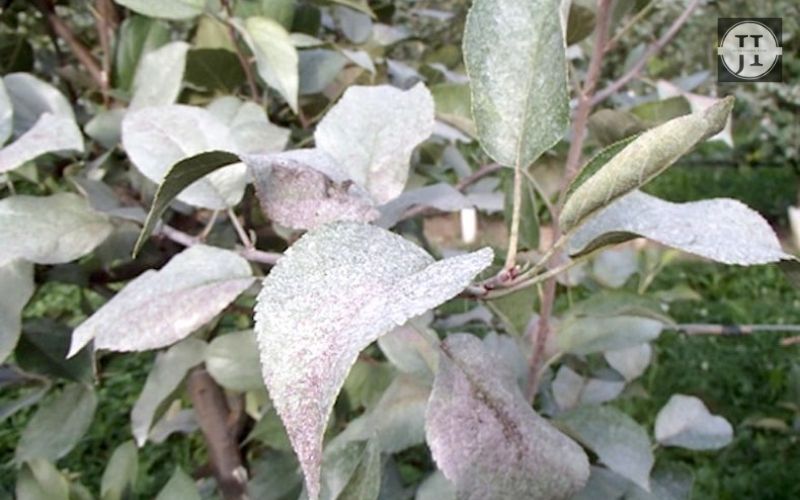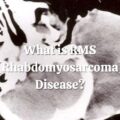Understanding and effectively combating silver leaf disease is crucial for anyone who values their garden or orchard. This destructive fungal infection can wreak havoc on various trees, including fruit-bearing ones, if left untreated. In this blog post, we will delve into the fundamentals of silver leaf disease, exploring its causes and symptoms, and providing you with effective solutions to tackle this relentless problem. By understanding how this disease operates and implementing the right preventive measures, you will be well-equipped in safeguarding your precious plants and ensuring their long-lasting health and vitality.
Understanding Silver Leaf Disease
Silver Leaf Disease, also known as Chondrostereum purpureum, is a fungal disease that affects a wide range of woody plants, including fruit trees, ornamental trees, and shrubs. This disease is caused by a fungal pathogen that enters the tree through pruning wounds or natural openings in the bark. Once inside, the fungus spreads and colonizes the wood, leading to characteristic symptoms that give the disease its name.
One of the main causes of Silver Leaf Disease is improper pruning. When trees or plants are pruned during certain times of the year or in unfavorable weather conditions, they become more susceptible to infections. The fungal spores of Chondrostereum purpureum are easily spread through the air and can enter the tree through fresh pruning cuts. Therefore, it is crucial to follow proper pruning practices, such as avoiding pruning during the rainy season and using clean pruning tools to minimize the risk of introducing the pathogen.
Identifying the symptoms of Silver Leaf Disease is essential for its effective management. The most prominent symptom is the silver appearance of the leaves. Infected leaves show a characteristic silver discoloration, caused by a layer of fine white fungal growth on the leaf surface. This discoloration can be easily observed, especially when the affected leaves are held against the light. In addition to the silver appearance, infected branches may exhibit dieback, where the branches gradually wither and die.
| Silver Leaf Disease – Summary |
|---|
| Silver Leaf Disease is a fungal disease affecting woody plants. |
| Improper pruning practices can introduce the fungal pathogen. |
| Characteristic symptoms include silver discoloration of leaves and branch dieback. |
| Early detection and proper management are essential to prevent the spread of the disease. |
Causes Of Silver Leaf Disease
Silver Leaf Disease, also known as Chondrostereum purpureum, is caused by a fungus that affects a wide range of deciduous trees, including fruit trees, ornamental trees, and shrubs. The fungus enters the tree through wounds or pruning cuts, and then infects the sapwood, leading to the development of the disease. One of the main causes of Silver Leaf Disease is improper pruning practices. When a tree is pruned incorrectly, it can create wounds that become entry points for the fungus, increasing the risk of infection.
Another cause of Silver Leaf Disease is stress on the tree. Environmental factors such as drought, excessive heat, or poor soil conditions can weaken the tree’s defense mechanisms, making it more susceptible to fungal infections. Inadequate nutrient supply and imbalanced pH levels in the soil can also contribute to tree stress and increase the likelihood of Silver Leaf Disease.
Furthermore, certain tree species are more susceptible to Silver Leaf Disease than others. For example, fruit trees such as cherry, apricot, and plum are particularly vulnerable. These trees produce nutrient-rich sap that attracts the fungus, making them more likely to be infected. Additionally, older trees with weakened immune systems are more prone to developing Silver Leaf Disease.
| Common Causes of Silver Leaf Disease |
|---|
| Improper pruning practices |
| Environmental stress (drought, heat, poor soil conditions) |
| Deficient nutrient supply and imbalanced pH levels |
| Susceptibility of certain tree species |
| Age and weakening of the tree’s immune system |
Understanding the causes of Silver Leaf Disease is essential for implementing effective prevention and control strategies. By avoiding improper pruning techniques, ensuring proper tree care and maintenance, and selecting resistant tree species, it is possible to minimize the risk of infection and promote a healthy tree population.
Identifying Symptoms Of Silver Leaf Disease
Silver Leaf Disease is a common fungal infection that affects a wide range of trees and shrubs. It is caused by the pathogenic fungus Chondrostereum purpureum and can be detrimental to the health and vitality of affected plants. One of the key steps in combating this disease is to accurately identify its symptoms. By being able to recognize the signs of Silver Leaf Disease, gardeners and arborists can take timely action to prevent further spread and minimize the damage caused.
1- Yellowing Leaves: One of the early symptoms of Silver Leaf Disease is the yellowing of leaves. Infected leaves often exhibit a pale, yellowish discoloration, starting from the veins and spreading towards the leaf margins. This yellowing is an indication of the fungus disrupting the movement of water and nutrients within the plant.
2- Silvering: As the disease progresses, infected leaves may develop a silvery sheen or metallic appearance. This silvering effect is a result of the fungus impairing the photosynthetic process of the affected leaves, thus reducing their ability to produce energy for the plant.
3- Leaf Curling: Another common symptom of Silver Leaf Disease is the curling of infected leaves. Diseased leaves may curl, twist, or exhibit irregular contortions due to the altered growth patterns caused by the fungal infection.
It is important to note that symptoms may vary depending on the type of tree or shrub that is infected. Therefore, it is essential to consult a plant disease specialist or reference reliable resources to accurately identify the specific symptoms associated with Silver Leaf Disease in a particular plant species. Prompt identification and proper management of the disease can help prevent significant damage and preserve the overall health and beauty of the landscape.
Effective Solutions To Combat Silver Leaf Disease
Silver leaf disease is a common fungal infection that affects various tree species, including fruit trees such as apple, cherry, and plum. This disease is caused by the fungus Chondrostereum purpureum, which enters the tree through wounds or pruning cuts. Once inside the tree, the fungus spreads and colonizes the vascular system, leading to the characteristic silvering of the leaves. If left untreated, silver leaf disease can weaken the tree and eventually cause its death. Therefore, it is crucial to implement effective solutions to combat this disease and preserve the health of affected trees.
Proper Pruning Practices
One of the most effective ways to combat silver leaf disease is through proper pruning practices. Pruning trees during the dormant season, when the fungus is less active, can reduce the risk of infection. It is essential to use clean, sharp pruning tools to minimize injury to the tree and prevent the entry of the fungal spores. After each cut, it is recommended to sanitize the pruning tools with a solution of bleach or rubbing alcohol to kill any potential pathogens.
Fungicides
In addition to pruning, another solution to combat silver leaf disease is the application of fungicides. Fungicides that contain active ingredients such as copper or sulfur can be effective in preventing the growth and spread of the fungus. These fungicides should be applied following the manufacturer’s instructions and at the appropriate time during the tree’s growth cycle. Regular and consistent application of fungicides can significantly reduce the impact of silver leaf disease on the affected trees.
Promoting the Overall Health
Furthermore, promoting the overall health and vigor of the trees is paramount in combating silver leaf disease. Trees that are stressed or weakened are more susceptible to infections. Therefore, it is crucial to provide proper nutrition, adequate water, and a well-drained growing environment for the trees. Mulching around the base of the tree can help retain moisture and regulate soil temperature, creating a favorable condition for the tree’s growth and resistance to disease.
Early Detection and Identification of Silver Leaf Disease
Lastly, early detection and identification of silver leaf disease symptoms are essential for effective management. Regularly inspecting the trees for characteristic silvering of the leaves, dieback of branches, and cankers can help identify the disease at its early stages. Prompt removal and disposal of infected plant material can prevent the spread of the fungus to healthy parts of the tree. Additionally, consulting with a professional arborist or horticulturist can provide valuable guidance in implementing the most suitable and effective solutions to combat silver leaf disease.












